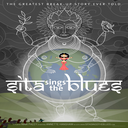dc10 - 0.5
DebConf10
| Speakers | |
|---|---|
|
|
Karl Fogel |
|
|
Nina Paley |
| Schedule | |
|---|---|
| Day | DebConf Day 3 (2010-08-03) |
| Room | Other Location |
| Start time | 19:30 |
| Duration | 01:30 |
| Info | |
| ID | 545 |
| Event type | movie |
| Track | Evening and Social |
| Language | en |
| Feedback | |
|---|---|
|
Did you attend this event? Give Feedback |
"Sita Sings the Blues" Screening and Q&A
An Artist Tries the Free Software Way and Wins Big (in Pupin 301, NW corner of campus, next to Shapiro)

"Sita Sings the Blues" is a popular film released under a Creative Commons Attribution-ShareAlike license. The filmmaker, Nina Paley, consciously chose a Free license in order to achieve the same dynamics for her film as software has in the free software world, and she succeeded.
By the end of 2009, "Sita Sings the Blues" was the best-reviewed new release in the country (http://moviereviewintelligence.com/index.aspx?BID=27&RID=805&CID=0) and audiences love it. We will hold a talk afterwards with the filmmaker and myself (Nina Paley is now artist-in-residence at our non-profit QuestionCopyright.org, and we helped her do the free release), both answering questions from the audience and talking about how free software methods can work for artists in general.
In late 2008, acclaimed animator Nina Paley had a copyright problem. She'd completed a brilliant, feature-length animated film, "Sita Sings the Blues", and it was a huge hit at festival screenings -- but she couldn't distribute it, because it used recordings of jazz songs from the late 1920s. Although the recordings were in the public domain, the compositions (the songs themselves) were not, and the corporations that held the copyrights to these 80-year-old songs wanted $220,000.00 USD in licensing fees to allow Paley to distribute the film.
She negotiated them down to $50,000.00 and paid it, but the experience caused her to question the wisdom of monopolies in the arts. She decided that having made her film legal for her to distribute, she'd make it legal for everyone to distribute. She released it under a Creative Commons ShareAlike license, and then, working with the non-profit QuestionCopyright.org (where she is now Artist-in-Residence), she developed an economic model that allows the audience to support her:
* Encourage people to share the film freely;
* Sell endorsed DVDs and other merchandise, showing how much money goes to the author;
* Make it easy to get involved (e.g., the subtitles on the endorsed DVD were done by fans)
* Make it easy to donate too;
* Allow commercial use (e.g., screenings) without requiring anyone to ask permission first;
* Use non-exclusive distributor arrangements to get the film into theaters;
* Encourage remixes and creative re-use.
All of these have direct parallels in free software, and that's no accident: Paley consciously adopted the methods of the free software movement to distribute the film. Our talk after the screening will explain in depth how and why, and discuss what Paley and QuestionCopyright.org are doing next to encourage more artists to try the Free route.
Meanwhile, "Sita Sings the Blues" continues to spread over the Internet and in theaters. By the end of 2009 it had not only become the best reviewed new release in the country (http://moviereviewintelligence.com/index.aspx?BID=27&RID=805&CID=0), it had brought in more money for Paley than any distributor had offered for a traditional, monopoly-based arrangement. Unlike in a "burst-and-fade" distribution model, it keeps going for as long as audiences want, because they own it too.
